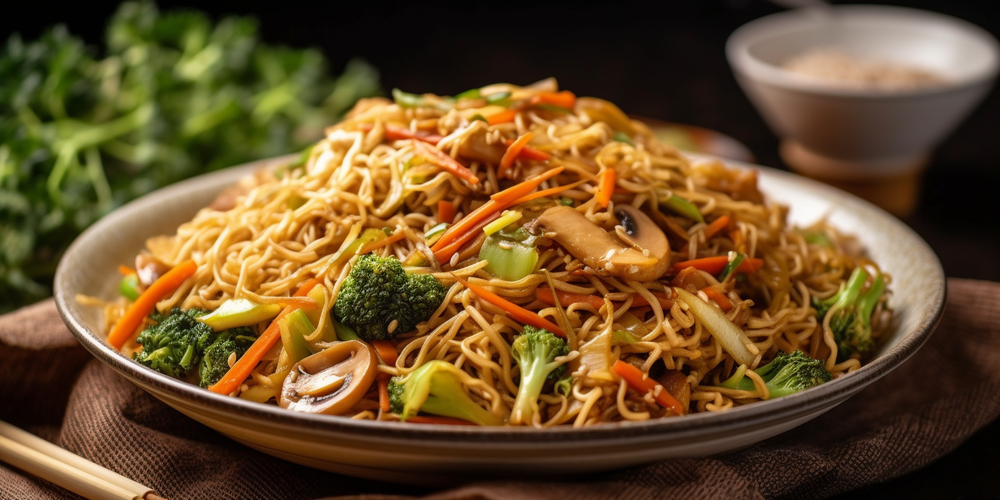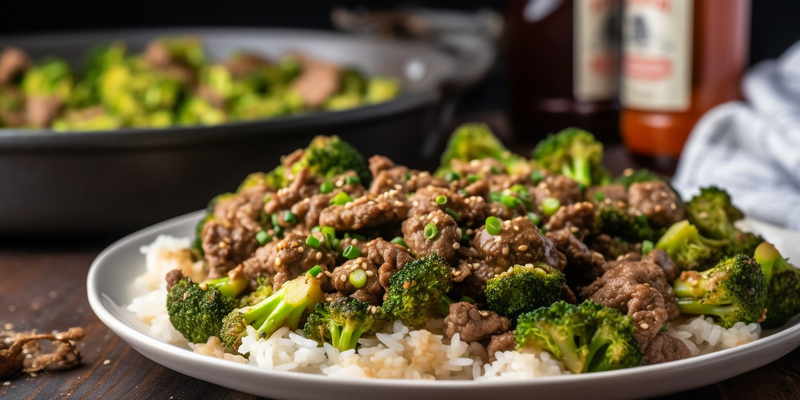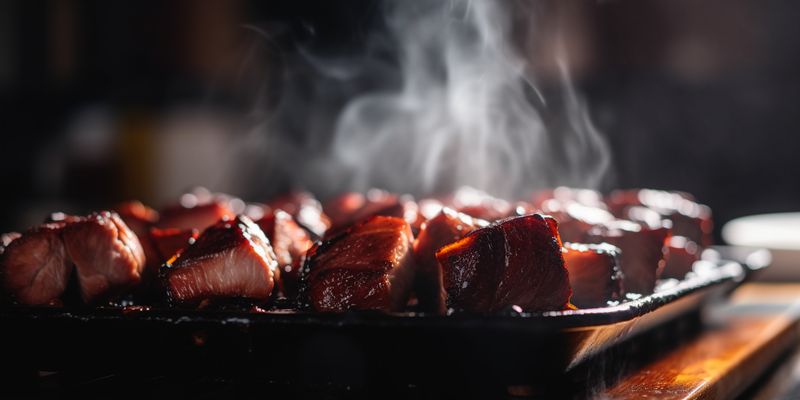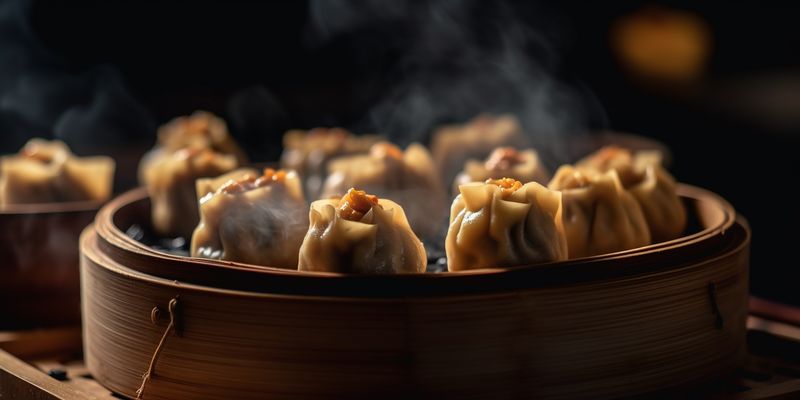Vegetable Chow Mein: A Delicious and Nutritious Chinese Stir Fry Recipe

If you’re looking for a quick and easy weeknight dinner or lunch that’s both delicious and healthy, then look no further than this vegetable chow mein recipe. This Chinese stir fry is packed with colorful and nutritious vegetables, and the savory sauce adds just the right amount of flavor to make this dish a favorite for both adults and kids.
Ingredients
Here’s what you’ll need to make vegetable chow mein for 4 people:
- 300g chow mein noodles
- 1 red bell pepper, thinly sliced
- 1 yellow bell pepper, thinly sliced
- 1 cup bean sprouts
- 1 cup sliced mushrooms
- 1 cup thinly sliced carrots
- 1 cup snow peas
- 1/2 cup sliced green onions
- 1/4 cup soy sauce
- 2 tablespoons hoisin sauce
- 1 tablespoon brown sugar
- 1 tablespoon vegetable oil
Instructions
- Start by cooking the chow mein noodles according to the package instructions. Drain and rinse with cold water, then set aside.
- In a small bowl, whisk together the soy sauce, hoisin sauce, and brown sugar. Set aside.
- Heat the vegetable oil in a large wok or skillet over high heat. Add the sliced mushrooms and cook for 2-3 minutes until they start to release their liquid.
- Add the sliced carrots, bell peppers, and snow peas to the skillet. Cook for 3-4 minutes, stirring occasionally, until the vegetables are slightly tender.
- Add the bean sprouts and sliced green onions to the skillet. Cook for 1-2 minutes, stirring constantly.
- Add the cooked chow mein noodles to the skillet. Pour the sauce over the noodles and vegetables. Toss everything together until the noodles and vegetables are evenly coated in the sauce.
- Cook for an additional 1-2 minutes until everything is heated through. Serve hot and enjoy!
Variations
This vegetable chow mein recipe is very versatile and can be customized to your liking. Here are a few ideas:
- Add protein: You can add cooked chicken, shrimp, or tofu to this dish for extra protein. Simply cook the protein separately and add it at the end when you add the noodles and sauce.
- Change up the vegetables: Use any vegetables you like or have on hand. Broccoli, bok choy, cabbage, and zucchini all work well in this dish.
- Make it spicy: If you like spicy food, add some red pepper flakes or sriracha sauce to the sauce mixture.
- Make it gluten-free: Use gluten-free chow mein noodles and tamari sauce instead of soy sauce.
Final Thoughts
This vegetable chow mein recipe is a great way to get your daily dose of vegetables in a delicious and easy way. It’s perfect for busy weeknights when you don’t have a lot of time to cook, and it’s also a great option for lunch. Plus, it’s vegetarian and can easily be made vegan by omitting the honey. Give it a try and let us know what you think!
FAQ
What vegetables can I use in Vegetable Chow Mein?
You can use any vegetables you like, but we recommend using a mix of crunchy and soft vegetables for texture. Some good options include bell peppers, carrots, cabbage, mushrooms, and onions.
Can I use spaghetti noodles instead of chow mein noodles?
Yes, you can use spaghetti noodles instead of chow mein noodles. However, the texture and flavor of the dish may be slightly different.
Is it necessary to cook the vegetables separately before adding them to the noodles?
No, it is not necessary to cook the vegetables separately. You can stir-fry them together with the noodles in the same pan.
Can I add meat or tofu to Vegetable Chow Mein?
Yes, you can add meat or tofu to Vegetable Chow Mein for extra protein. Cook the meat or tofu separately and add it to the stir-fry towards the end.
Can I make Vegetable Chow Mein ahead of time?
Yes, you can make Vegetable Chow Mein ahead of time and reheat it when you’re ready to serve. Store it in an airtight container in the refrigerator for up to 3 days.
Can I freeze Vegetable Chow Mein?
Yes, you can freeze Vegetable Chow Mein for up to 2-3 months. Make sure to let it cool completely before storing it in an airtight container or freezer bag.
Can I use vegetable oil instead of sesame oil?
Yes, you can use vegetable oil instead of sesame oil. However, sesame oil adds a unique flavor to the dish that you may miss.
Can I use soy sauce instead of oyster sauce?
Yes, you can use soy sauce instead of oyster sauce. However, oyster sauce adds a richer flavor to the dish.
How do I prevent the noodles from sticking together?
Make sure to cook the noodles according to the package instructions and rinse them with cold water to stop the cooking process. Toss them with a little bit of oil to prevent them from sticking together.
Can I use other types of noodles instead of chow mein noodles?
Yes, you can use other types of noodles like udon noodles, rice noodles, or soba noodles. However, the texture and flavor of the dish may be slightly different.



